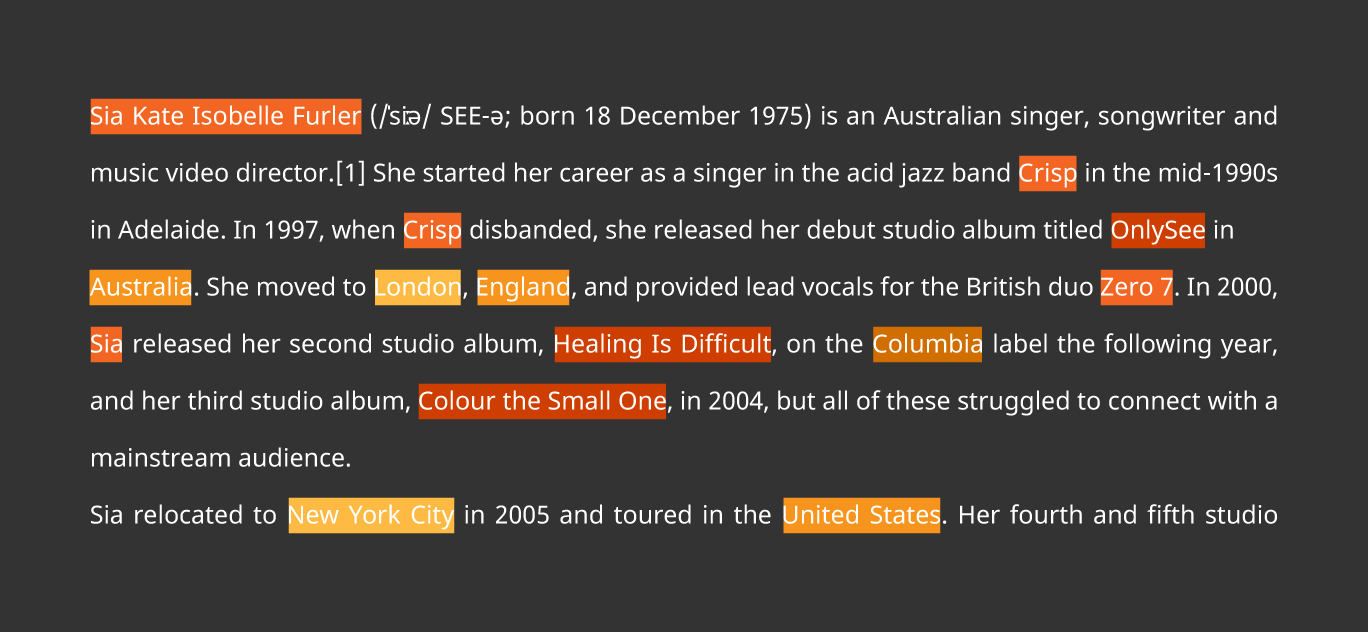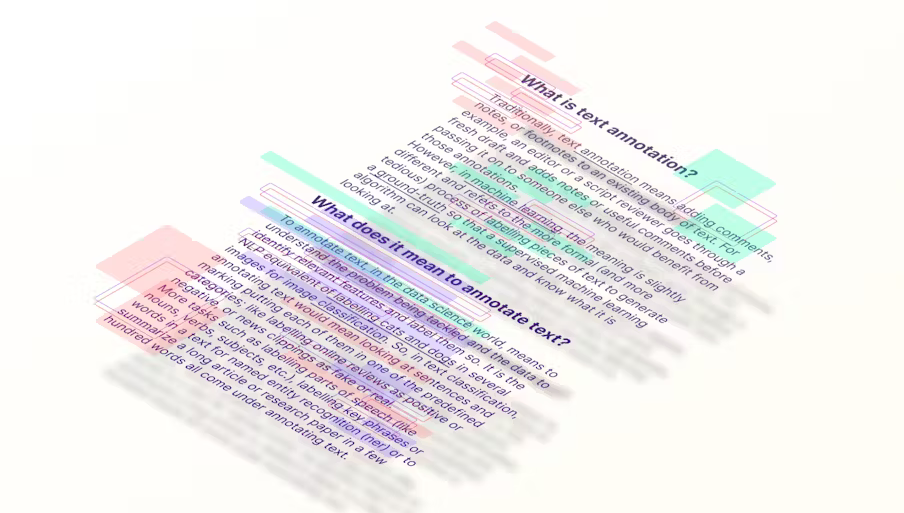Annotating text means adding meta-data to text, like semantics or sentiments. A good way for the AI to learn and understand nuances is through human annotations.
Everything You Need to Know About Text Annotation
Every day, we interact with different media (such as text, audio, images, and video), relying on our brain to process what media we are seeing and make meaning out of it to influence what we do. One of the most common types of media is text, which makes up the languages we use to communicate. Because it is so commonly used, text annotation needs to be done with accuracy and comprehensiveness.With machine learning (ML), machines are taught how to read, understand, analyze, and produce text in a valuable way for technological interactions with humans. Per the 2020 State of AI and Machine Learning report, 70% of companies reported that text is a type of data they use as part of their AI solutions. Understandably so, as the cost-savings and revenue-generating implications of text-based solutions across all industries are enormous.As machines improve their ability to interpret human language, the importance of training using high-quality text data becomes increasingly indisputable. In all cases, preparing accurate training data must begin with accurate, comprehensive text annotation.
What is Text Annotation?

Algorithms use large amounts of annotated data to train AI models, which is part of a larger data labeling workflow. During the annotation process, a metadata tag is used to mark up characteristics of a dataset. With text annotation, that data includes tags that highlight criteria such as keywords, phrases, or sentences. In certain applications, text annotation can also include tagging various sentiments in text, such as “angry” or “sarcastic” to teach the machine how to recognize human intent or emotion behind words.The annotated data, known as training data, is what the machine processes. The goal? Help the machine understand the natural language of humans. This procedure, combined with data pre-processing and annotation, is known as natural language processing, or NLP.These tags must be accurate and comprehensive. Poorly done text annotations will lead a machine to exhibit grammatical errors or issues with clarity or context. If you ask your bank’s chatbot, “How do I put a hold on my account?” and it responds with, “Your account does not have a hold on it,” then clearly the machine misunderstood the question and needs retraining on more accurately-annotated data.A machine will learn to communicate efficiently enough in natural language after being trained on accurately annotated text data. It can carry out the more repetitive and mundane tasks humans would otherwise do. This frees up time, money, and resources in an organization to enable focus on more strategic endeavors.The applications of natural language-based AI systems are endless: smart chatbots, e-commerce experience improvements, voice assistants, machine translators, more efficient search engines, and more. The ability to streamline transactions by leveraging high-quality text data has far-reaching implications for customer experience and organizations’ bottom line across all major industries.
Types of Text Annotation
Annotations for text include a wide range of types, such as sentiment, intent, semantic, and relationship. These options are available across a wide array of human languages.
Sentiment Annotation
Sentiment annotation evaluates attitudes and emotions behind a text by labeling that text as positive, negative, or neutral.
Intent Annotation
Intent annotation analyzes the need or desire behind a text, classifying it into several categories, such as request, command, or confirmation.
Semantic Annotation
Semantic annotation attaches various tags to text that reference concepts and entities, such as people, places, or topics.
Relationship Annotation
Relationship annotation seeks to draw various relationships between different parts of your document. Typical tasks include dependency resolution and coreference resolution.The type of project and associated use cases will determine which text annotation technique should be selected.
How is Text Annotated?
Most organizations seek out human annotators to label text data. Human annotators are especially valuable in analyzing sentiment data, as this can often be nuanced and is dependent on modern trends in slang and other uses of language.Still, large-scale text annotation and classification tools out there can help you achieve the deployment of your AI model quickly and more inexpensively. The route you take will depend on the complexity of the problem you’re trying to solve, as well as the resources and financial commitment your organization is willing to make.Refer to data labeling methods for a comprehensive look at the annotation options available to your organization.

